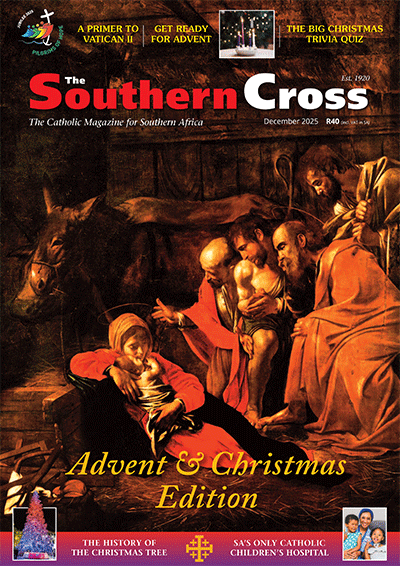Movie reviews – Life of Pi/ Here comes the Boom/End of Watch/The Master
Life of Pi
By John Mulderig, Catholic News Service
Religious themes are central to director Ang Lee’s visually artful screen version of Yann Martel’s best-selling novel “Life of Pi” (Fox). Indeed, this exotic 3-D fable bills itself as a story calculated to make the agnostic reporter (Rafe Spall) to whom its unlikely events are recounted “believe in God.”

Suraj Sharma and a fierce Bengal tiger named Richard Parker are seen in the movie “Life of Pi.” (CNS photo/Fox)
Regardless of whether it has that effect on audiences, Catholic moviegoers will certainly welcome its positive portrayal of their faith, and the presence in the tale of a sympathetic priest.
The fact that the earnest spiritual quest of its protagonist results in his simultaneous adherence to Hinduism, Christianity and Islam is, however, problematic to say the least. All the more so, since screenwriter David Magee’s script implicitly upholds this ultra-tolerant but illogical stance.
Concern over youthful viewers’ reaction to this interreligious will-o’-the-wisp is the major element precluding endorsement of Lee’s picture for any but adults.
And just who is our main character? Played in adulthood by Irrfan Khan but portrayed for most of the running time in his 17-year-old persona by Suraj Sharma, he is an Indian-born Canadian known formally as Piscine Militor Patel – but called Pi for short.
As flashbacks under the guise of memories being shared with the unnamed – and unbelieving – journalist reveal, Pi was bred in the picturesque former French enclave of Pondicherry. Growing up contentedly amid the natural beauty of the area, Pi was fascinated by the wondrous creatures that inhabited the zoo his parents (Adil Hussain and Tabu) owned.
Discovering God in varied manifestations during the initial stages of the quest referenced above, Pi also made a less exalted discovery by falling for a local girl. So when Mom and Dad announced, shortly afterward, they were moving the family to the Great White North, Pi was crushed.
Upheaval turned to tragedy when the freighter carrying Pi’s family – as well as some of the animals from their former zoo – sank in a terrible squall. Pi was the only human survivor. But his endurance was immediately put to a further test when he found himself forced to share a small lifeboat with a Bengal tiger.
Not for the impressionable or the poorly catechized, this psychological parable, whose meaning cannot be explained without spoilers, also becomes somewhat taxing as the rigors of the lad’s unusual ordeal begin to rub off on viewers.
Aesthetic judgments will likely hinge on the degree to which audiences summon the hardiness necessary to follow Pi’s adventures through to the end. Assessed from a religious perspective, his fictional memoir registers as honourable but ultimately somewhat misguided.
The film contains a complex treatment of religious faith requiring mature interpretation, potentially upsetting scenes of life-threatening danger and animal aggression, some mildly vulgar wordplay and fleeting scatological humour.
Here Comes the Boom
By Joseph McAleer, Catholic News Service
NEW YORK (CNS) – Perseverance pays off big time in “Here Comes the Boom” (Columbia), the unlikely yet inspiring tale of an ordinary man who goes to extraordinary lengths to help others.

Kevin James and Henry Winkler star in a scene from the movie “Here Comes the Boom.” (CNS photo/Sony)
Directed by Frank Coraci and starring Catholic actor Kevin James – who also co-wrote the screenplay with Allan Loeb – “Here Comes the Boom” is that Hollywood rarity, a film which extols Christian virtue. In this case the quality being showcased is self-sacrifice as James’ character displays the altruism needed to turn around a failing public school.
Scott Voss (James) is a washed-up biology teacher at fictional Wilkinson High School in Boston. A decade ago he was “Teacher of the Year”; today, he’s uninterested and bored – more baby-sitter than educator. The wicked Principal Betcher (Greg Germann) runs Wilkinson like a business, cutting salaries and activities at will.
Scott can’t even get the girl; Bella (Salma Hayek), the aptly named school nurse, repeatedly turns down his requests for a date.
What rouses Scott from his personal and professional slumber is the beautiful music being made in the classroom next door by his colleague Marty Streb (Henry Winkler) and Marty’s student orchestra.
Marty’s zest for teaching – and life in general – stirs something in Scott. So when Principal Betcher announces that the music program is to be eliminated – along with Marty’s job – Scott rises to the occasion, pledging to raise the $48,000 necessary to keep the activity in place.
At first, Scott tries to raise the funds by conventional means, moonlighting as a tutor for immigrants seeking to become U.S. citizens. One of his students, Niko (Bas Rutten), is a former mixed martial arts fighter (as is Rutten in real life). There’s big money to be had by entering the cage, Scott discovers, and taking on the sport which combines boxing, kickboxing, karate, judo and wrestling.
A one-time college wrestler, Scott decides to channel his inner “Rocky” and become a cage fighter. Despite being beaten to a pulp in each bout, Scott inspires his students and co-workers – especially Bella, who tenderly patches up his wounds.
Amid some extreme cage-fighting violence, “Here Comes the Boom” offers up a few welcome Christian references.
A crucifix hangs above Scott’s bed. He gathers his support team together in prayer before the big fight. And around the dinner table, his fellow fighters discuss the Bible, admiring Jacob’s all-night wrestling match with the angel as recounted in Chapter 32 of the Book of Genesis. Jacob lost that battle – but ultimately won out through faith in God and submission to his will.
“Here Comes the Boom” reaches a similar resolution, albeit with more humour and a much louder soundtrack.
The film contains realistic martial arts sequences, a brief scene of gross-out humour and one instance of crass language.
End of Watch
By Joseph McAleer,�Catholic News Service
Filmed entirely with handheld cameras, “End of Watch” (Open Road) is an immersive experience. This gritty police drama has a documentary feel and authentic look, putting the viewer front and center in a clash between good and evil in the inner city.

Michael Pena and Jake Gyllenhaal star in a scene from the movie “End of Watch.” (CNS photo/Open Road Films)
Regrettably, the pervasive violence and incessant trash talk in “End of Watch,” written and directed by David Ayer (“Training Day”), will deter many from seeing a riveting, well-acted film with a powerful Christian message of brotherhood and laying down one’s life for another.
Officers Brian Taylor (Jake Gyllenhaal) and Mike Zavala (Michael Pena) are partners in the Los Angeles Police Department. By day they patrol a section of South Central Los Angeles, a haven for drug dealers and street gangs.
“We’re looking for all the major food groups: dope, money and guns,” Mike says. The officers are confident and cocky, but brutally honest. They are “big ghetto gun fighters” with a knack for hunting down the bad guys (and girls).
At the close of each shift, they sign their reports “EOW” (“End of Watch”), meaning they are off-duty. Needless to say, every day they can end in such a way is a good day.
Using multiple video cameras, Brian documents his performance as part of a college homework assignment. Thus, “End of Watch” unfolds through Brian’s eyes, but also in the eyes of people he meets, good and bad, since everyone has a camera these days – and is addicted to sharing videos on YouTube.
Between police calls, Brian and Mike banter about life and dream big, sharing their different cultural backgrounds. Mike is Hispanic, married to his high school sweetheart, Gabby (Natalie Martinez), expecting their first child. He’s a family man, and offers innumerable life lessons and advice to his Anglo partner when Brian falls hard for the academic Janet (Anna Kendrick), and thinks it may be time to put aside his childish ways and settle down.
In the fight for justice, these officers somehow find the inner strength to persevere despite witnessing the barbarism and inhumanity of man. This display of unwavering selflessness in the war against evil gives “End of Watch” a hope-filled Christian edge, even if organized religion plays little part in the actual film.
The film contains pervasive, brutal and gory violence and torture, frequent drug use, premarital sex, same-sex kissing, partial nudity, sexual innuendo, constant profanity, and occasional rough language.
The Master
By John Mulderig, Catholic News Service
“The Master” (Weinstein) is a literate but sterile drama, a wearing cinematic experience further burdened by a degraded view of human sexuality and excessive explicitness in its portrayal.

Joaquin Phoenix and Philip Seymour Hoffman star in a scene from the movie “The Master.” (CNS photo/Weinstein)
Writer-director Paul Thomas Anderson’s period piece, mostly set in the aftermath of World War II, follows the fortunes of beleaguered, alcoholic Navy veteran Freddie Quell (Joaquin Phoenix). After being demobilized, Freddie becomes a drifter. Unable to find a place for himself in society, either professionally or personally, he fails at one job after another and dabbles in casual romantic relationships.
Once he crosses paths with charismatic cult leader Lancaster Dodd (Philip Seymour Hoffman), however, Freddie’s prospects seem to improve. Dodd takes a liking to the irascible newcomer and acquires a taste for the extra potent version of moonshine Freddie likes to cook up for himself.
Freddie not only becomes a favoured follower of Dodd’s, he also submits to Dodd’s version of psychotherapy, known as “processing,” in the hope of controlling his explosive temper. But Freddie’s inner demons keep his relationship with Dodd – known to his devotees by the honorific that supplies the film’s title – a tumultuous one.
Anderson embellishes his meticulously crafted picture with striking visuals, and draws intense performances from his leads. But neither the tormented vet nor the clever peddler of crackpot ideas – Dodd believes that processing puts his subjects in touch with their many past lives – makes a particularly sympathetic figure.
Anderson, moreover, deals with the varied sexual escapades of his characters frivolously. Thus, though Freddie is portrayed as harbouring forlorn hopes for a permanent bond with a girl from his past, his idealistic attitude toward her does not incline him to forsake all others – as demonstrated in a couple of graphic encounters.
An equal lack of restraint characterizes a scene in which Dodd inspires unrestrained bawdiness in his female disciples, who suddenly shed their clothes and prance across the screen in the altogether. However artistically impressive some other elements of the movie may be, the inclusion of such content renders these proceedings unsuitable for all.
The film contains strong sexual content, including graphic nonmarital sexual activity, full nudity and masturbation, references to incest and venereal disease, some scatological humor, at least one use of profanity as well as frequent rough and occasional crude language.
- When was Jesus born? An investigation - December 13, 2022
- Bishop: Nigeria worse off now - June 22, 2022
- St Mary of the Angels Parish puts Laudato Si’ into Action - June 17, 2022





